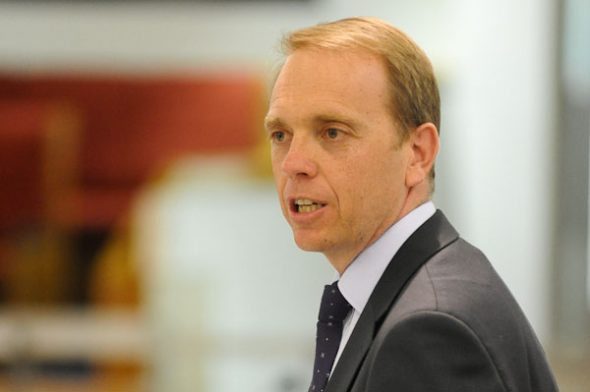Simon Corbell, the ACT’s minister for the environment and architect of the only functioning renewable energy policy in Australia, has announced his retirement from state politics.
Corbell, whose 90 per cent by 2020 renewable energy target and accompanying policy for the ACT has, by far and away, led the clean energy transition in Australia, said on the weekend that he would retire as a Member of the ACT Legislative Assembly at the October 2016 election.

In a media statement , Corbell said his decision not to seek ALP pre-selection for the next election after nearly two decades of public service had been a difficult one, but that it was the right time for him “to explore new horizons and new opportunities, personally and professionally.”
The announcement follows last week’s launch of the Territory’s second wind energy auction, for the development of a further 200MW of wind energy capacity across the National Electricity Market.
The highly successful first round of wind energy auctions managed to elicit prices as low as $81.50 per megawatt hour, the lowest wind energy prices ever obtained in Australia.
Indeed, under Corbell’s guidance, the ACT has been the brightest beacon for the renewable energy in Australia for some time now. Last August it officially opened the 20MW Royalla solar farm – the largest in Australia and, extraordinarily, the first in the National Electricity Market.
In particular, the ACT’s renewable energy auctions – both for large-scale solar and wind energy capacity – have been one of the few great success stories for the industry, at a time when policy, both federally and in other states on the NEM, was being either removed or pared back.
Corbell has also announced plans to turn the policy focus to large-scale solar plus storage, with an auction of 50MW of capacity planned for later this year.
Last year, in an interview with RE, Corbell expressed his frustration with federal policy and the level of ignorance and ideology against renewables.
At the time (Sept. 2014), Corbell described the prospects for renewable energy in Australia as “dismal”, and put this down to a mixture of factors.
“It is certainly based on the protection of vested interests in incumbent generators, particularly where energy ministers are effectively the owners of the assets,” he said.
“It is also fundamentally a lack of understanding of what is happening technologically. There is still an extraordinary level of misunderstanding about the capacity for solar to provide for dispatchable power, for storage to allow for electricity to be dispatched when needed.
“There is a lack of understanding of how widespread solar is in the future energy mix. Until we have a better level of understanding and visibility among our key decision makers about where we are going, we will continue to suffer second-rate policy settings on behalf of the national government and some state governments.”
Corbell has, however, used his own understanding of the “future energy mix” – and its important role in future climate action – to rally other states to push for their own renewable support mechanisms.
“The states and territories are very well positioned to act. They can put in place their own renewable energy schemes, whether it’s mandated renewable energy targets, whether it is feed in tariff support arrangements,” he said .
“That combined with measures for mandated energy efficiency requirements that can help reduce demand, are a strong suite of tools that should be deployed carefully, and ingeniously by state and territory governments.”
He will be missed. We can only hope he will set his sights on federal politics!








